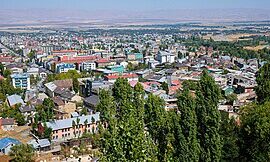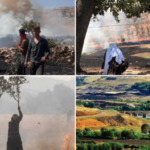Muş (pronounced ‘Mush’; Armenian: Մուշ; Kurdish: Mûş) is a city in North Kurdistan (southeastern Turkey) with a mainly Kurdish population of 120,699 (2022).
Mush’s founding date is unknown, though a settlement is believed to have been around by the time of Menua, king of Urartu (c. 800 BC), whose cuneiform inscription was found in the vicinity. During the Middle Ages, Mush was the center of the Taron region of Armenia.
At the turn of the 20th century, the city had around 20,000 inhabitants, of which 11,000 were Muslims, and 9,000 Christian Armenians. During the Armenian genocide of 1915 the indigenous Armenian population of the region was exterminated. Over 140,000 Armenians living in 234 villages and towns were targeted in June and July 1915.
The area of Muş has several ruined castles. Under the rule of medieval Armenian dynasties, monasteries and churches were built in localities near Mush, such as the Arakelots Monastery, Surp Marineh Church, and Surb Karapet Monastery, most of which are now ruins.



